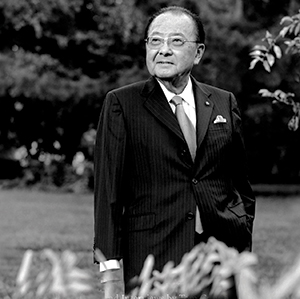

It’s one of the keenest ironies of the Second World War. In the 1940s the American-born sons of Japanese immigrants—the Nisei—were soldiers at some of the worst fighting in Europe. Meanwhile, their families languished in a series of prison camps, all over the wastelands of America.
Californians assume that the rest of the nation knows about this, because the story is so well known here. Don’t bet on it. San Francisco’s Tom Graves, author and photographer of Twice Heroes: America’s Nisei Veterans of WWII and Korea, has learned during his travels that the mass internment is a topic that few study away from the West Coast.
Graves was lecturing at a university in Texas. “I asked how many of the 70 people in the room had heard of what happened to the Japanese-Americans,” Graves says. “Only two people raised their hands. One of the two was the professor.”
Opening soon at the Japanese American Museum of San Jose is a show of Graves’ portraits of these old soldiers, including several new unpublished ones. The show is titled: “Twice Heroes and More.”
“It really became my mission to teach people more about it,” Graves says. His original book has 98 photographs of Nisei men and women who served in the military, with personal histories. Graves notes that his subjects “may talk about combat, childhood, the internment campsÉ There are others from Seattle, Oregon, Washington DC. I tried not make it a Bay Area book, but for this exhibit I specifically interviewed local veterans of World War II or Korea.”
During the war years, some 115,000 Japanese Americans were kept in stockades, between the Pacific and the Mississippi. Perhaps two-thirds of the confined were American-born citizens. Despite the the humiliation of seized homes, and transportation to the desert or the prairie, the sons of the interned volunteered to fight in World War II, in the racially segregated 442nd Regiment. Their motto was ‘Go for Broke’—a Hawaiian expression meaning to gamble everything. And when the Korean War broke out, Nisei soldiers were ready.
Graves previously photographed Morgan Hill’s Lawson Sakai, who received four Purple Hearts and a Bronze star for his soldiering in the Vosges. Sakai took part in the rescue of the famous “Lost Battalion,” whose survival is one of the legends of the war. The newer portraits include Katsumi “Kats” Hikido of Campbell, injured from a landmine while serving with the 442nd. Also part of the exhibit: Tak Ota of Gilroy, whose uncle was killed in Hiroshima even as Ota was doing intelligence work for the Army.
A quartet of San Jose vets posed for Graves: Buster Ichikawa was wounded, but made it back alive from the bitter fighting in Italy. Leo Oyama fought in France and Italy with K Company of the 442nd. Frank Shimada was in the blast range of an Axis grenade. Hiroshi “Terry” Terakawa was a corporal in the Korean war.
Graves says that all these old warriors have something in common: “They’re very quiet, very humble. But if you sit with them, more things about what happened in the war come out. ‘I’m not a hero,’ they say first off. ‘I didn’t do anything anyone else didn’t do. We were just [there] to prove we were citizens, hoping we could help our families in the internment camp.'”
Graves started his project in 2001, when he was interviewing veterans. “When I learned the story of how poorly the nation treated the families of the Nisei, and how brave these soldiers were in combat, it became my mission to find out more,” he says.
When the war was over, anti-Japanese sentiment continued. Graves tells a story of an army captain and later a U.S. Senator, Daniel Inouye, arriving in San Francisco. This 442nd vet, who lost an arm in Italy, walked into a Market Street barber shop with a chest full of medals, including the Distinguished Service Cross. Inouye was denied a seat and told, “We don’t cut Jap hair here.”
“After the war, these people were not allowed to rent or buy houses.” Graves says. “These guys fought for this country after the treatment they were getting. It struck me as one of the greatest lessons in American history. And it’s largely not being taught.”noon


